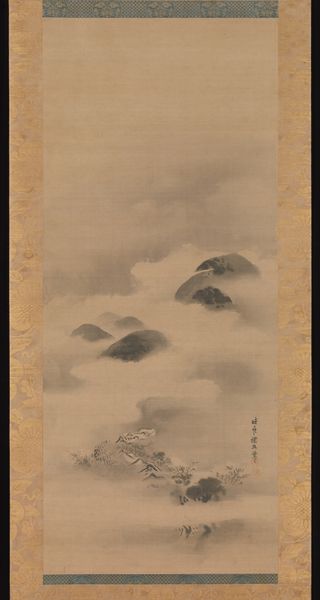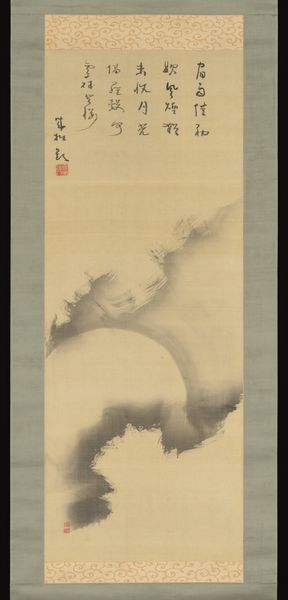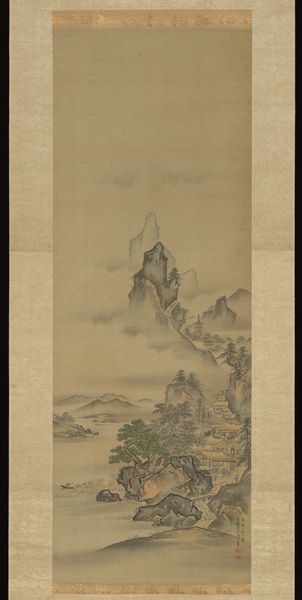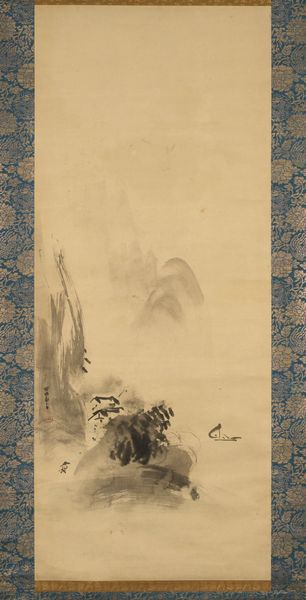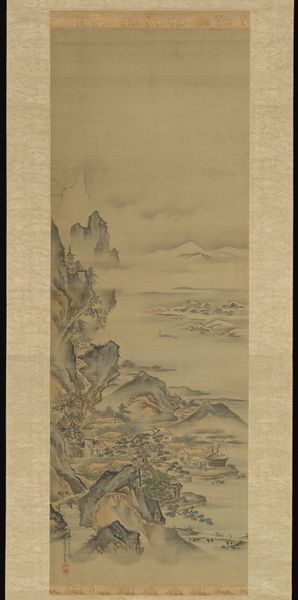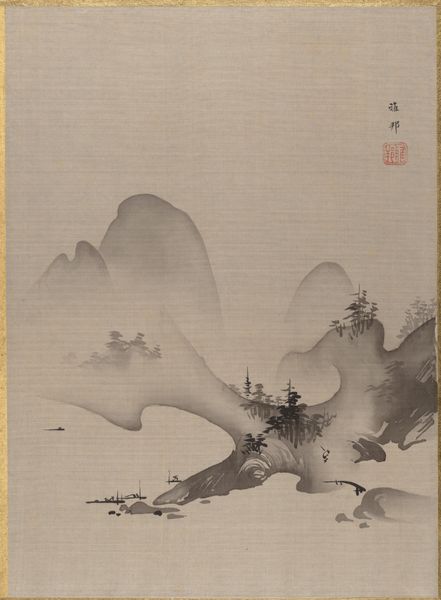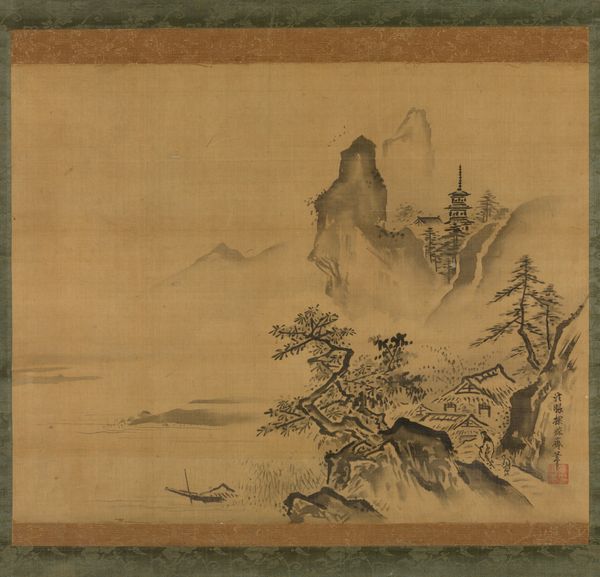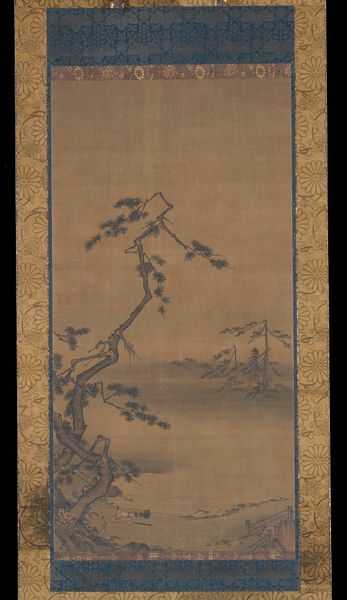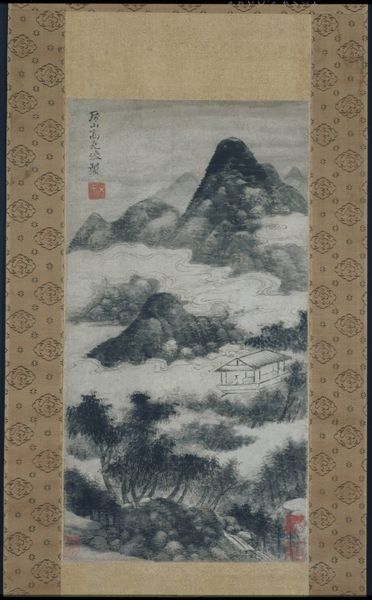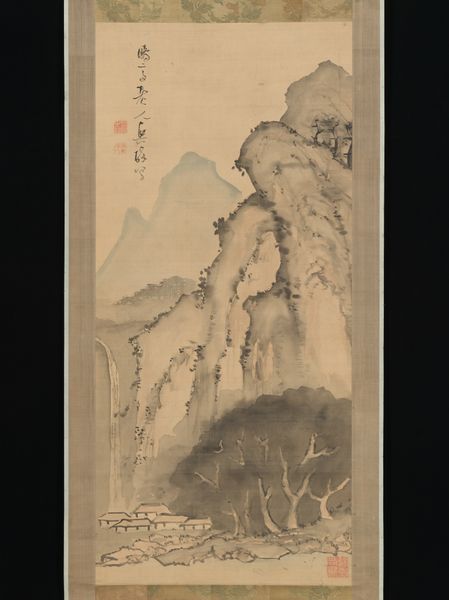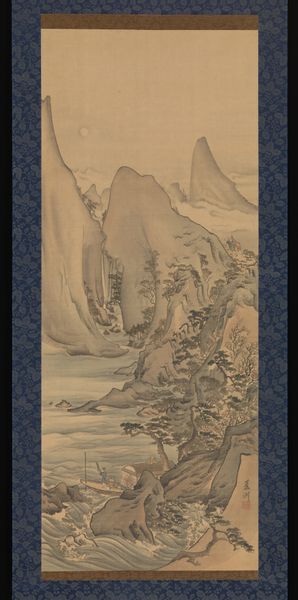
drawing, tempera, painting, paper, ink
#
drawing
#
tempera
#
painting
#
asian-art
#
landscape
#
paper
#
oil painting
#
ink
Dimensions: Image: 39 5/8 x 16 3/4 in. (100.6 x 42.5 cm) Overall: 75 3/8 x 23 1/2 in. (191.5 x 59.7 cm)
Copyright: Public Domain
Curator: Here we have Kano Tan'yū’s "Landscape in Moonlight," likely rendered sometime between 1663 and 1674. Crafted with ink and tempera on paper, this hanging scroll offers us a serene vision. Editor: It's instantly calming. That muted palette, the soft gradations... It feels almost dreamlike, shrouded in mist and mystery. Curator: Indeed. Tan'yū was a pivotal figure in the Kano school of painting, which dominated the Japanese art scene for centuries. His works were often deeply influenced by Zen Buddhism and Chinese landscape painting. This piece particularly exemplifies the concept of 'less is more.' The strategic use of empty space—what some might call negative space—is incredibly powerful. Editor: That restraint highlights something beyond just the landscape itself, wouldn’t you say? Like the ineffable, our connection to something beyond the material world, maybe even reflecting wabi-sabi principles, celebrating beauty in imperfection and transience. How does this style and philosophy reflect back on the societal values during this period? Curator: Precisely! The Edo period in which Tan'yū lived was governed by strict social hierarchies and neo-Confucian ideals that were deeply ingrained into public roles for artists. The patronage system, especially that offered through affiliations with the Tokugawa shogunate, allowed Tan’yū space to navigate creative and ideological freedoms while simultaneously operating within its established framework. Such refined artistic expressions offered a sense of escape from the rigid structures of the shogunate, speaking to broader socio-political contexts through nuanced aesthetic choices. Editor: That push-and-pull between individual expression and social expectation really resonates. How could Tan'yū, even through landscape painting, question those power structures or reflect on them for an elite viewership? Was this his form of activism or commentary? Curator: Though perhaps not explicitly activism, Tan'yū’s mastery provided an outlet to quietly question assumptions and highlight alternative values that implicitly commented on the more conventional doctrines upheld by those in power, thereby sparking critical thought on values of impermanence and enlightenment. Editor: It makes you think about what other sorts of subtle interventions are at play throughout the cultural works produced by any society... I'll carry that with me. Curator: I agree. Viewing this work really highlights the profound ways art engages with society and offers avenues for critical examination.
Comments
No comments
Be the first to comment and join the conversation on the ultimate creative platform.
